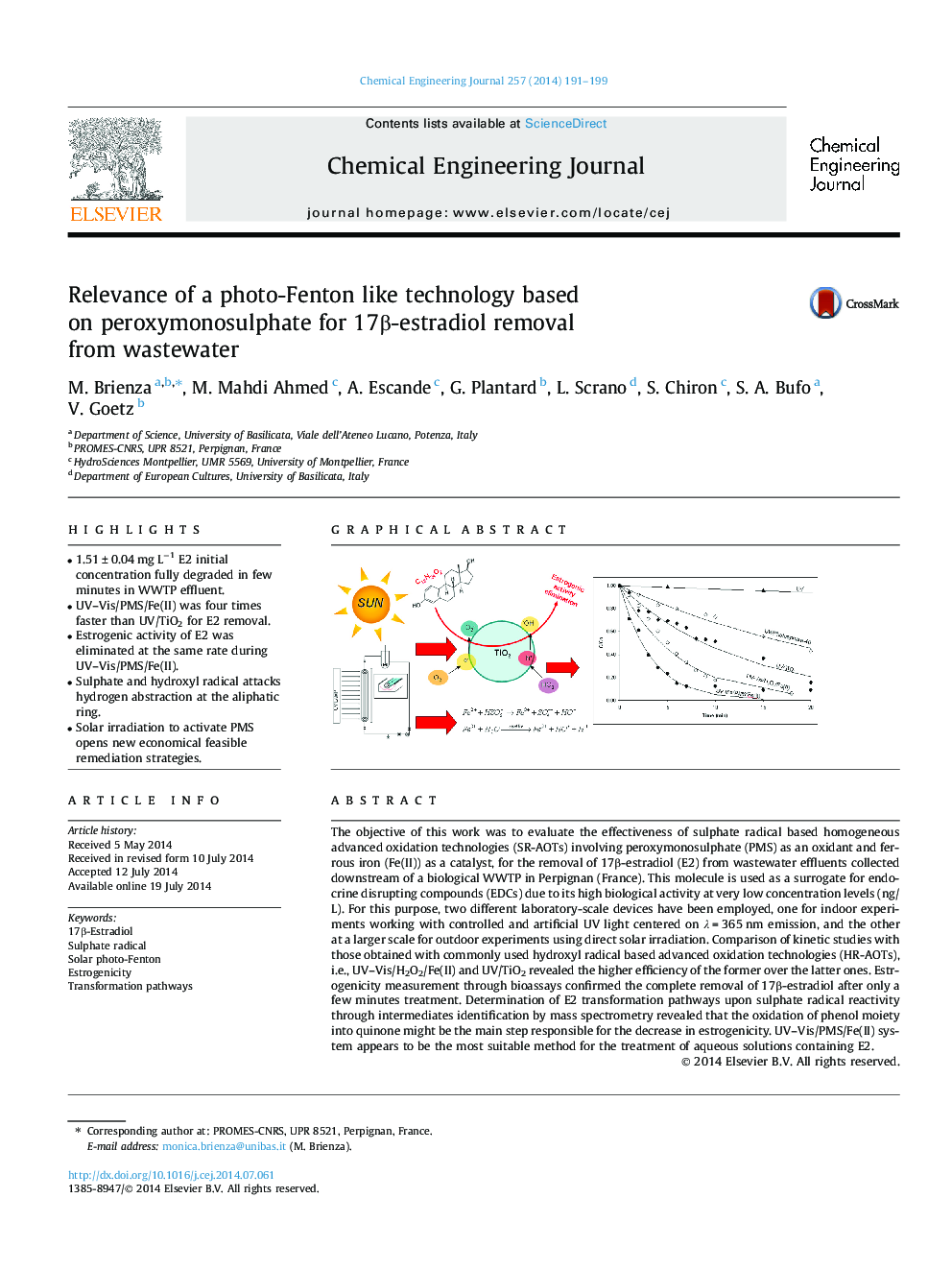| کد مقاله | کد نشریه | سال انتشار | مقاله انگلیسی | نسخه تمام متن |
|---|---|---|---|---|
| 147325 | 456389 | 2014 | 9 صفحه PDF | دانلود رایگان |

• 1.51 ± 0.04 mg L−1 E2 initial concentration fully degraded in few minutes in WWTP effluent.
• UV–Vis/PMS/Fe(II) was four times faster than UV/TiO2 for E2 removal.
• Estrogenic activity of E2 was eliminated at the same rate during UV–Vis/PMS/Fe(II).
• Sulphate and hydroxyl radical attacks hydrogen abstraction at the aliphatic ring.
• Solar irradiation to activate PMS opens new economical feasible remediation strategies.
The objective of this work was to evaluate the effectiveness of sulphate radical based homogeneous advanced oxidation technologies (SR-AOTs) involving peroxymonosulphate (PMS) as an oxidant and ferrous iron (Fe(II)) as a catalyst, for the removal of 17β-estradiol (E2) from wastewater effluents collected downstream of a biological WWTP in Perpignan (France). This molecule is used as a surrogate for endocrine disrupting compounds (EDCs) due to its high biological activity at very low concentration levels (ng/L). For this purpose, two different laboratory-scale devices have been employed, one for indoor experiments working with controlled and artificial UV light centered on λ = 365 nm emission, and the other at a larger scale for outdoor experiments using direct solar irradiation. Comparison of kinetic studies with those obtained with commonly used hydroxyl radical based advanced oxidation technologies (HR-AOTs), i.e., UV–Vis/H2O2/Fe(II) and UV/TiO2 revealed the higher efficiency of the former over the latter ones. Estrogenicity measurement through bioassays confirmed the complete removal of 17β-estradiol after only a few minutes treatment. Determination of E2 transformation pathways upon sulphate radical reactivity through intermediates identification by mass spectrometry revealed that the oxidation of phenol moiety into quinone might be the main step responsible for the decrease in estrogenicity. UV–Vis/PMS/Fe(II) system appears to be the most suitable method for the treatment of aqueous solutions containing E2.
Figure optionsDownload as PowerPoint slide
Journal: Chemical Engineering Journal - Volume 257, 1 December 2014, Pages 191–199